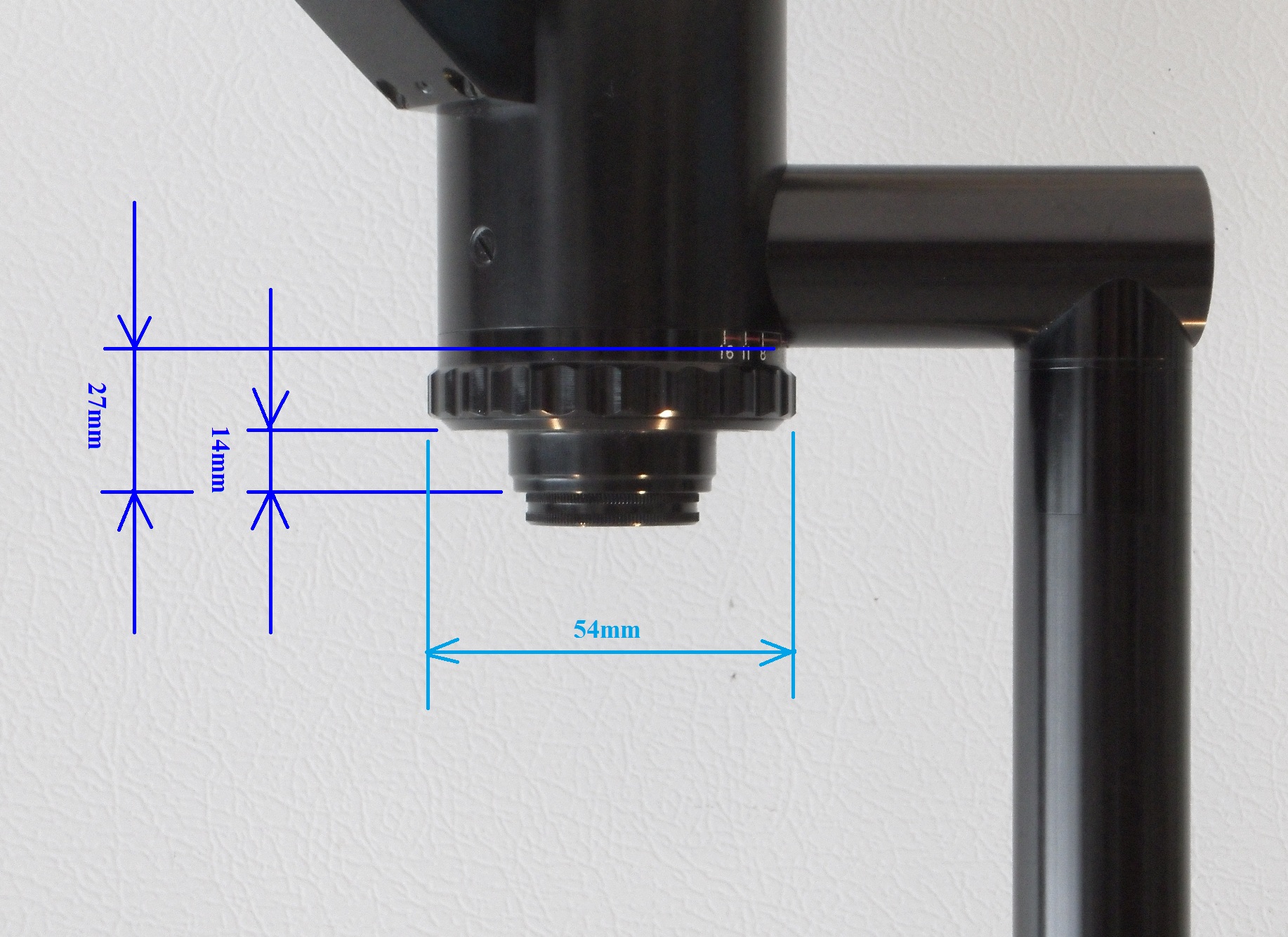| SOM Berthiot Pan Cinor 17-85mm f/2 Pan Cinor 85-2 was manufactured by the famous French company, SOM (Société d'Optique et de Mécanique) Berthiot, which later became SOPELEM (Société d'Optique Précision Electronique et Mécanique). It was introduced in 1964, 5 years later since the introduction of the earlier Pan Cinor 85. The lens came either with or without a built-in reflex viewfinder. As you can see, mine came with the built-in viewfinder, whose purpose is to provide the reflex view for a non-reflex camera such as an old Bolex. So if you have a non-reflex camera, you might want to look for lenses like this.
The Coating The yellowish coating. The image shot with the lens gets yellow/orange-ish tint.
The Diaphragm The iris is formed by the 16 blades (in dual layer), and they form an octagonal aperture as you can see in the photo above. The widest aperture is f/2. And it goes all the way to f/16. In transmission, it looses about 2/3 stop of light, making the widest T/stop at T2.66.
The Barrels The degree of rotation from ∞ to the MOD is around 270°, which is great. Having the MOD at 1.8m / 6ft, the lens is somewhat difficult to use in interior scenes. But if you have the lens in C mount, you can unscrew a bit to get a little closer.
The zoom is controled by the lever instead of a barrel. It enables fast zoom, but it makes the lens a bit bulky.
The aperture barrel has f/stop markings in white. There is no "click" at each stops like some lenses do. The red lines and the dots at each stop indicates the transmissive loss, which is for instance, T2.8 can be found at the end of the red line which extends from f/2.8 toward f/2. To me this is really confusing.
The Built-In Viewfinder The majer difference between 85 and 85-2 is the design of the viewfinder. The viewfinder on a 85 has split-image rangefinder, whereas the rangefinder on 85-2 is coincident image, with which you see two images when they are out of focus. I don't know if it is supposed to be an improvement since, to me, split-image is much easier to use and the viewfinder on 85-2 cannot be detached entirely (See the photo above), which causes some mounting problems.
However, the viewfinder on a 85-2 does provide the ocular adjustment unlike 85.
The Mount
As far as I know, the lens comes in either C or Arri-S mount. Mine came in C mount, and there are a couple of things you should note. First of all, the lens does not fit to some of the cameras. As you can see in the photo above, the tube which is a part of the viewfinder sticks out at the base of the lens, and sometimes it hits some parts of a camera, making the lens unable to be mounted. So if you are thinking of purchasing the lens, make sure the lens does fit on your camera. Approximate measurements are noted on the photo above to provide some reference. The lens is also quite heavy, so you might need a lens support when you do stuffs like fast pan/tilt with a C mount version as it might cause some serious problems.
The Specifications
|

